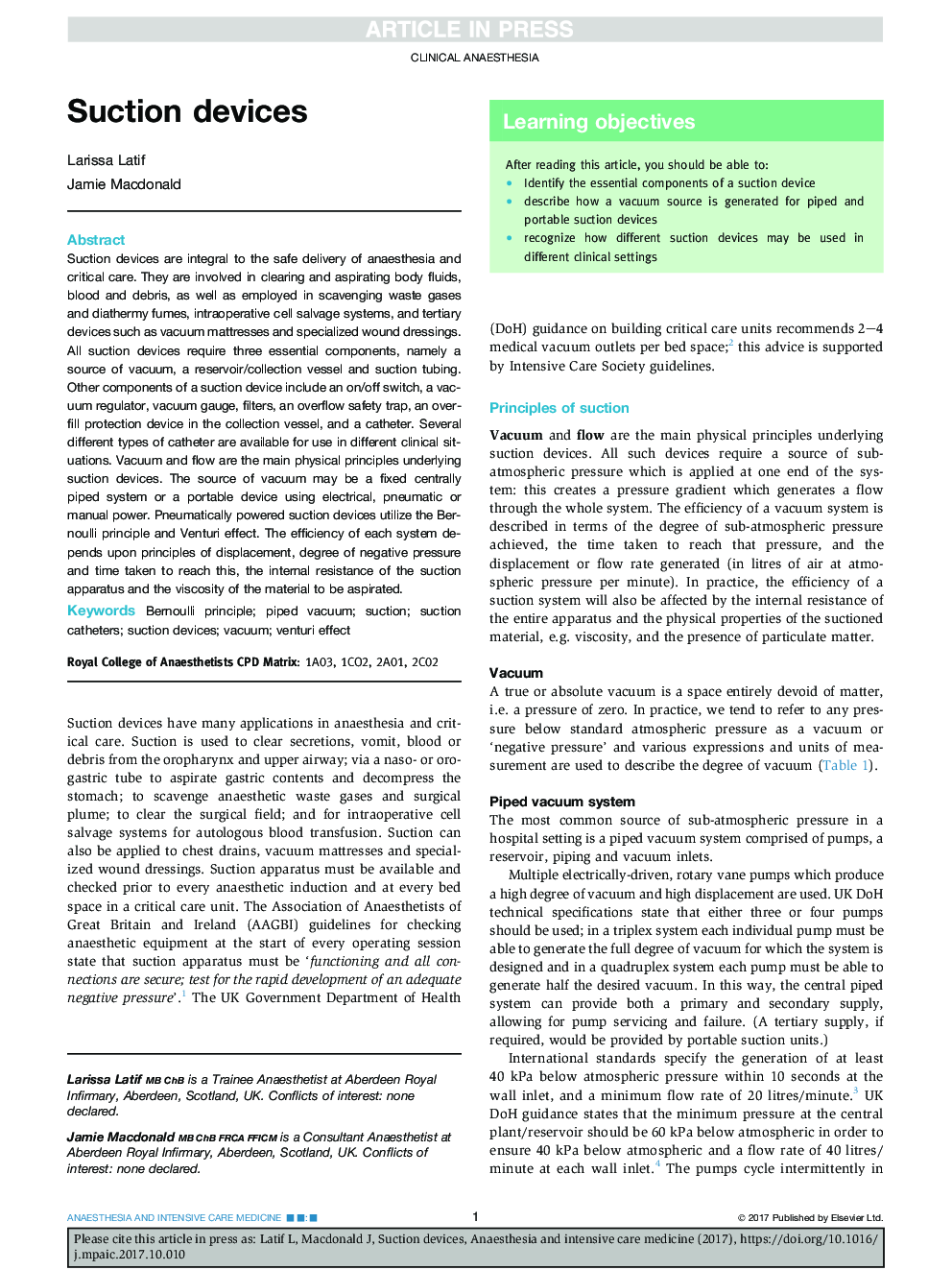| Article ID | Journal | Published Year | Pages | File Type |
|---|---|---|---|---|
| 8610139 | Anaesthesia & Intensive Care Medicine | 2018 | 4 Pages |
Abstract
Suction devices are integral to the safe delivery of anaesthesia and critical care. They are involved in clearing and aspirating body fluids, blood and debris, as well as employed in scavenging waste gases and diathermy fumes, intraoperative cell salvage systems, and tertiary devices such as vacuum mattresses and specialized wound dressings. All suction devices require three essential components, namely a source of vacuum, a reservoir/collection vessel and suction tubing. Other components of a suction device include an on/off switch, a vacuum regulator, vacuum gauge, filters, an overflow safety trap, an overfill protection device in the collection vessel, and a catheter. Several different types of catheter are available for use in different clinical situations. Vacuum and flow are the main physical principles underlying suction devices. The source of vacuum may be a fixed centrally piped system or a portable device using electrical, pneumatic or manual power. Pneumatically powered suction devices utilize the Bernoulli principle and Venturi effect. The efficiency of each system depends upon principles of displacement, degree of negative pressure and time taken to reach this, the internal resistance of the suction apparatus and the viscosity of the material to be aspirated.
Related Topics
Health Sciences
Medicine and Dentistry
Anesthesiology and Pain Medicine
Authors
Larissa Latif, Jamie Macdonald,
